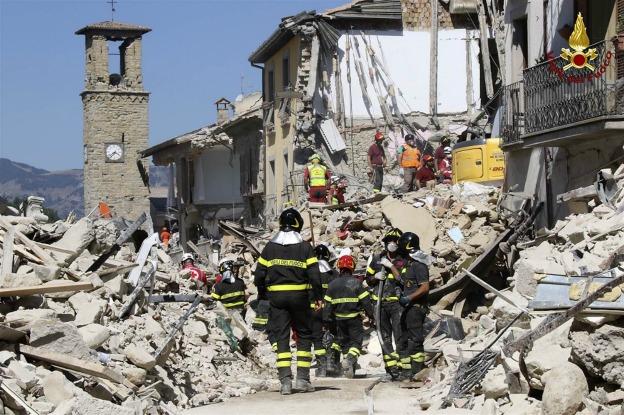Why Italy is a Country with a High Seismic Risk
ITA:

Italy is no stranger to powerful earthquakes. Records going back hundreds of years indicate devastating temblors in central Italy that forced people to abandon their hometowns during the Middle Ages. A 6.3 earthquake struck L’Aquila in 2009, a mere 55 km away from the August 24 quake, killing more than 300 people. Two major earthquakes, a few days apart, struck Emilia-Romagna in 2012, killing 27 people.
Italy is a country with a high seismic risk. According to the Civil Protection Agency, “our country, in the last 2500 years, has been struck by over 30,000 earthquakes of medium and high intensity.” The area with the highest seismic risk runs along the Apennine ridge, in the central-southern portion of the peninsula. This area, says the Civil Protection Agency on its website, “has seen some of the strongest and most destructive events that Italy’s earthquake history has recorded.”
Why is Italy so prone to earthquake?
Because it is close to the fault line between two of the Earth's major tectonic plates, the Eurasian and African plates, which, by constantly grating against each other, cause seismic and volcanic tension.
In addition, Italy has a number of smaller fault lines, especially along the Apennines, a mountain range that runs from the north to the south of the country, from Liguria to Calabria. The faults can rupture and cause earthquakes.
In fact, the quake that struck Italy on August 24 occurred along a fault in the Central Apennines.
Seismologists cannot accurately predict when another earthquake will occur. However, says leading Italian geologist Mario Tozzi, “by now, we have observed that, every 4 or 5 years, an earthquake occurs in the Apennines area.”
L'Italia non è estranea a forti terremoti. Documenti storici che risalgono a centinaia di anni fa indicano terremoti devastanti in centro Italia che costrinsero gli abitanti ad abbandonare le loro città durante il Medioevo. Un terremoto di magnitudo 6.3 colpì L'Aquila nel 2009, a soli 55 km di distanza dal terremoto del 24 agosto, uccidendo più di 300 persone. Due forti terremoti, a pochi giorni di distanza l’uno dall’altro, colpirono l’Emilia-Romagna nel 2012, uccidendo 27 persone.
L'Italia è un paese ad alto rischio sismico. Secondo la Protezione Civile, “il nostro Paese, negli ultimi 2500 anni, è stata colpito da oltre 30.000 terremoti di intensità media e alta.” L'area con il più alto rischio sismico corre lungo la dorsale appenninica, nella parte centro-meridionale della penisola. In questa zona, scrive la Protezione Civile sul suo sito web, “sono stati registrati alcuni dei più forti e distruttivi terremoti nella storia d’Italia.”
Perché l'Italia è così incline ai terremoti?
Perché si trova vicino alla faglia tra due delle maggiori placche tettoniche della Terra, la placca euroasiatica e quella africana, che, fregando costantemente l’una contro l’altra, provocano attività sismica e vulcanica.
Inoltre, l'Italia ha un certo numero di faglie più piccole, in particolare lungo l'Appennino, una catena montuosa che si sviluppa dal nord al sud del paese, dalla Liguria alla Calabria. Le faglie possono rompersi e causare terremoti.
Infatti, il terremoto che ha colpito l'Italia il 24 agosto si è verificato proprio lungo una faglia dell'Appennino centrale.
I sismologi non possono prevedere con precisione quando avverrà un altro terremoto. Tuttavia, sostiene il noto geologo italiano Mario Tozzi: “Ormai abbiamo osservato che ogni 4 o 5 anni c'è un sisma che colpisce la dorsale appenninica.”











